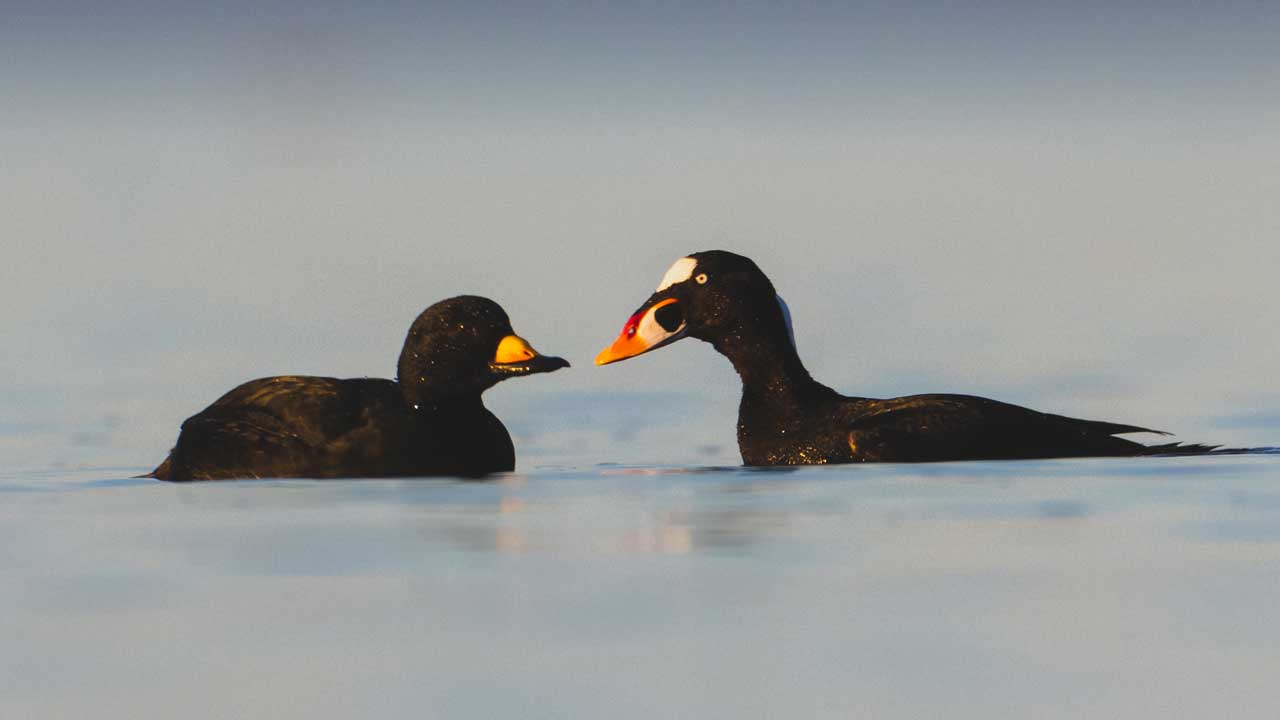Lead Institution(s): State University of New York-Brockport
Project Lead: Jacob Straub
Collaborator(s): Anthony Roberts (USFWS), Kelsey Sullivan (Maine DIFW)
Location: Atlantic Flyway
Focal Species: Long-tailed Duck (Clangula hyemalis), Black Scoter (Melanitta americana), Surf Scoter (Melanitta perspicillata), White-winged Scoter (Melanitta delgandi)
Project Description: Sea duck demography is difficult to study because their breeding and non-breeding range is challenging to access and/or work in. Recent population modeling (Koneff et al. 2017) has identified specific demographic parameters that are most sensitive to harvest, hence improving management and providing a sustainable recreational opportunity. Increased knowledge about annual productivity (i.e., juvenile:adult ratios) is thought to greatly improve estimates of harvest potential. Most biologists can identify and correctly assign sea ducks to an age class and sex based on plumage characteristics when a bird is in hand. However, capturing a representative number of birds to make this assessment is costly and difficult. A promising and cost effective alternative is using photos of sea ducks from winter to assign birds to the correct age and sex cohorts, by species. Age ratios (juveniles:adults) obtained from photos, can then be used to inform population models, identify factors that influence breeding success, and examine spatial distribution of age and sex classes.
Interim Report FY21
Interim Report FY22
Final Report
Publications:
Hewitt, Jacob E. 2023. Evaluating annual recruitment of sea duck populations in the Atlantic Flyway using harvest and photo survey juvenile proportions. M.Sc. Thesis. State University of New York Brockport. Brockport, NY, USA. 112p.
https://soar.suny.edu/handle/20.500.12648/13947
Related Links:
Recipients of SDJV Student Fellowship Awards
Student Fellowship Feature: Jake Hewitt
